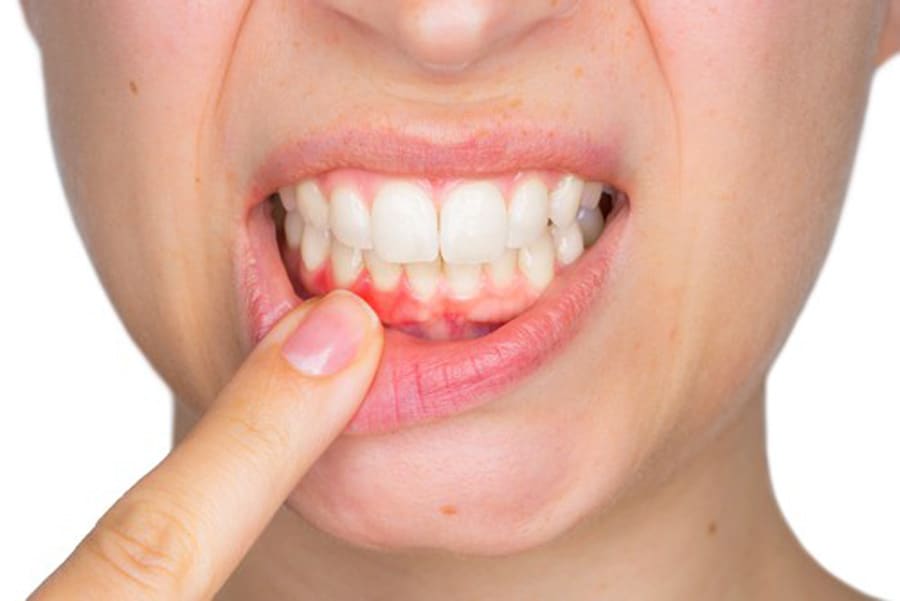The gingival recession has direct causes and predisposing factors. Orthodontic treatment can prevent recession and even contribute to its treatment, with or without a periodontal approach, depending on the type and severity of gingival tissue damage. There is no evidence on the fact that orthodontic treatment alone might induce a gingival recession, although it might lead the affected teeth to be involved in situations that act as predisposing factors, allowing direct causes to act and, therefore, trigger recession. In this article, some orthodontic facts regarding the relationship between orthodontic treatment and gingival recession have been addressed. We will also discuss the gingival recession orthodontic treatment to find the best orthodontics near me. Read on to find out more.Gingival recession, also known as gum recession, is the exposure in the roots of the teeth caused by a loss of gum tissue and/or retraction of the gingival margin from the crown of the teeth. The main characteristic of the gingival recession is the apical migration of marginal gingiva as well as the fact that the latter is gradually displaced away from the cementoenamel junction, thereby exposing the root surface to the oral environment. It is found nearly in all populations worldwide and is generally limited to a single root surface, most of the time, the buccal one. Gum recession with braces can occur for several different reasons. These include:
- Periodontal diseases: These are bacterial gum infections that destroy gum tissue and supporting bone that hold your teeth in place. Gum disease is the main cause of gum recession.
- Your genes: Some people may be more susceptible to gum disease. In fact, studies show that 30% of the population may be predisposed to gum disease, regardless of how well they care for their teeth.
- Aggressive tooth brushing: If you brush your teeth too hard or the wrong way, it can cause the enamel on your teeth to wear away and your gums to recede.
- Insufficient dental care: Inadequate brushing, flossing, and rinsing with antibacterial mouthwash makes it easy for plaque to turn into calculus (tartar) which is a hard substance that builds on and between your teeth and can only be removed by a professional dental cleaning. It can lead to gum recession.
- Hormonal changes: Fluctuations in female hormone levels during a woman’s lifetime, such as in puberty, pregnancy, and menopause, can make gums more sensitive and more vulnerable to gum recession.
- Gum disease occurs when bacteria that accumulate on the teeth spread onto the gum tissue and cause an infection. Left untreated, the infection can cause damage to the sensitive gum tissue, causing it to pull away from the teeth. It can even damage the bone of the jaw and lead to tooth loss.
Braces are a highly effective orthodontic treatment. Unfortunately, some studies have shown that there is a very small link between braces and gum recession that is putting some patients off of getting orthodontic braces. So, can braces cause gum recession? The short answer is no. No evidence proves that wearing braces will cause your gums to recede. However, oral problems that occur if you do not look after your teeth properly while wearing your braces could contribute towards conditions that develop that will then cause your gums to recede.If you fail to brush your teeth properly when you are wearing braces, plaque can accumulate on the teeth and then move onto the gums, triggering the start of gum disease which could then lead to gum recession. However, if you brush and use interdental cleaning tools as directed by your orthodontist, your risk of experiencing gum disease will be significantly reduced.The prevalence of gingival recession in patients with infraversion and open bite after orthodontic treatment was 80.6 and 75.0%, respectively; these values were 43.4 and 47.5% before treatment, respectively. Notably, the index of gingival recession increased after orthodontic treatment. The risk of gum recession orthodontics in patients with infraversion or open bite after orthodontic treatment was remarkably higher than the risk in other patients; the gingival recession rate was related to treatment with tooth extraction, as well as gingival biotype and gingival index before orthodontic treatment.Patients with these two types of low occlusal function are more likely to exhibit gingival recession after orthodontic treatment. Moreover, the prevalence of gingival recession after orthodontic treatment is higher among patients who have undergone tooth extraction during orthodontic treatment, and among those who exhibit thin gingival biotype and high gingival index before orthodontic treatment.The treatment for receding gums depends on the underlying cause. The following treatments can help reattach or restore gum tissue around the teeth:Scaling and root planing are some of the first treatments for receding gums that a dentist may recommend. These procedures remove plaque and tartar from below the gum line, where regular brushing cannot reach.
Root planing removes plaque and tartar specifically from the roots of teeth. Afterward, a dentist will use special instruments to smooth the roots, which helps the gums reattach to the tooth.A dentist may recommend gum graft surgery (GGS) if a person’s gums have severely receded.
During GGS, a surgeon will take a small piece of gum tissue from elsewhere in the mouth and use it to cover the exposed tooth roots.
GGS helps prevent bone loss and the gums from receding further. It can also protect the previously exposed tooth roots from decay.Pinhole surgical technique (PST) is a relatively new treatment for mild to moderate receding gums. PST is a minimally invasive procedure that involves making a tiny hole in the gum tissue above the exposed tooth root.
A dentist will insert a special tool into the hole to separate the gum from the tooth, then they will stretch and reposition the gum back over the exposed tooth root.So this is all you need to know about the gum recession from braces and its treatment. Gum recession is not something you want to ignore. If you think your gums are receding, make an appointment with your orthodontist vs general dentist. There are treatments that can repair the gum and prevent further damage.


